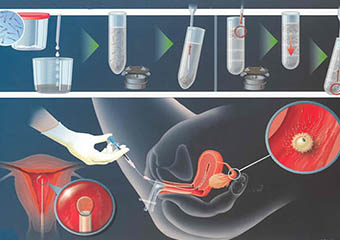
Introduction
Intrauterine Insemination or IUI is a fertility treatment in which laboratory washed semen is placed inside a woman’s uterus at the time of ovulation to facilitate fertilization and get her pregnant.
The prime goal of IUI is to increase the number of sperms reaching the fallopian tubes for better chances of fertilization. IUI technique gives sperm the head start needed to fertilize the egg, however sperm still has to move ahead, reach the egg and fertilize it on its own.
When is IUI recommended?
Generally, IUI is recommended when a male partner has fertility issues that are less sperm count or low motility.
However, IUI may be selected as an infertility treatment for the conditions given below
- Unexplained infertility
- A cervical condition including cervical mucus problem
- Cervical scar tissue hindering sperm motility and its ability to enter the uterus
- Ejaculation dysfunction
When is IUI not recommended?
IUI is not recommended if a woman has
- Severe fallopian tube disease
- Severe male factor
- Severe endometriosis
How is IUI performed?
- Sperm specimens are collected after the ejaculation abstinence for 3-5 days, to produce healthy and quality sperms
- The best quality sperms with higher motility are chosen and washed in the laboratory (known as sperm washing).
- These sperms are separated from other components of the semen and then concentrated in a small volume. It is either placed in the uterine cavity using a thin tube
- IUI is performed soon after the processing of the sperm is completed.

